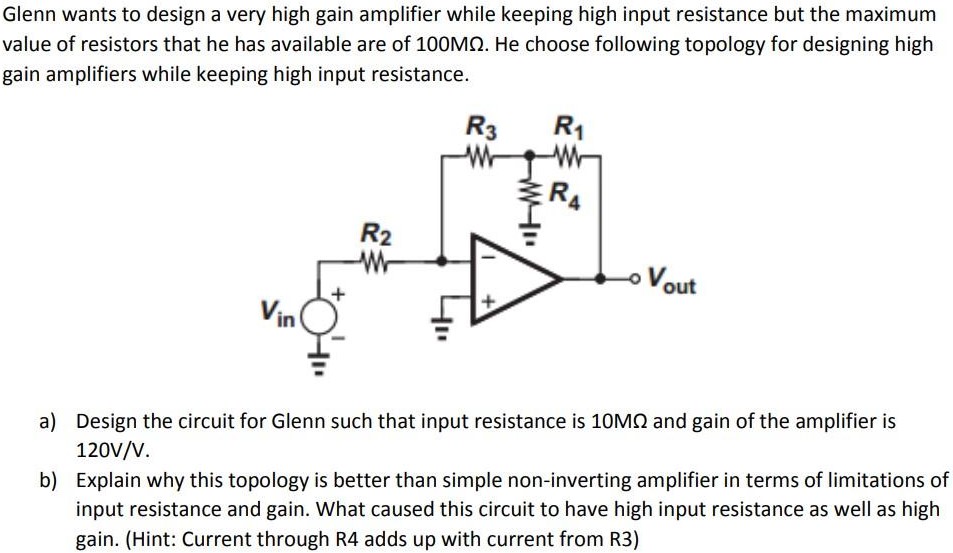Glenn wants to design a very high gain amplifier while keeping high input resistance but the maximum value of resistors that he has available are of 100 MΩ. He choose following topology for designing high gain amplifiers while keeping high input resistance. a) Design the circuit for Glenn such that input resistance is 10 MΩ and gain of the amplifier is 120 V/V. b) Explain why this topology is better than simple non-inverting amplifier in terms of limitations of input resistance and gain. What caused this circuit to have high input resistance as well as high gain. (Hint: Current through R4 adds up with current from R3)
